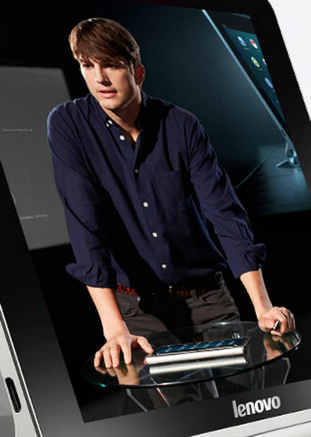Ashton Kutcher and Lenovo working on two and a half phones: What they need to do


Actor and tech investor Ashton Kutcher teamed up with Lenovo last year to launch the firm's Yoga Tablet line. Kutcher presented the Android tablets at the launch event, showcasing the innovative design with an integrated stand.
Lenovo and Kutcher also shared the latter's working with Lenovo as a product engineer, with the fruits of that partnership coming in the future. The future is now, with both parties recently announcing that Kutcher would be helping Lenovo design several smartphones.
It would be easy to write off this design work as a publicity stunt, but Lenovo is clear that Kutcher is indeed helping in the design process for a line of smartphones for launch this year. It's expected such design work will be centered around usage of the phones, rather than hardware design.
I'm no smartphone engineer nor do I play one on TV, but I think it would behoove Kutcher to concentrate on three areas to make the most of the new smartphones.
Sweet hardware
Kutcher may not be focussing on the phone hardware, but I think he should. The smartphone space has grown so boring with phones becoming basically glass covered slabs. Lenovo and Kutcher should shake things up with some sort of design change that makes phones interesting again.
I don't have a suggestion what that might be, but between Lenovo and Kutcher they should be able to come up with something. Lenovo did it with the integrated stand on the Yoga Tablet, so do something unexpected to peak our interest in these phones.
Don't forget the enterprise
Owners need to unplug first thing in the morning and run until late at night, with nary a concern about battery life.
The consumer space is the hot market for smartphones and it is easy to focus solely on those shoppers. Even so, it would be a mistake to overlook the role the smartphone is playing in the workplace with greater regularity.
Companies buy smartphones by the thousands, and individuals are bringing phones to work through Bring Your Own Device (BYOD) programs. Workers buying phones for BYOD need software innovations in place on the handset to keep corporate and personal information completely separate.
Respect that workers own the device, and need to be free from worry that the company will step over personal data with enterprise software and support. Build that invisible fence in software that keeps both employee and company interests separate.
Bump up the battery
With handset buyers using phones longer each day, the ability to do that away from a power outlet is greater now than ever. Owners need to unplug first thing in the morning and run until late at night, with nary a concern about battery life.
The best way to do this is to make the charge last longer than is currently possible. If technology isn't able to do that, perhaps having a removable battery is the way to go. Make the process of swapping the battery as easy as possible to entice owners to do it.
Perhaps the way to make this work is by making the battery hot-swappable, meaning the dead battery can be swapped with a charged one without shutting the phone off. This is done with laptops, so why not with phones? Tap a button and the dead battery pops out the side of the phone, and slide the charge one in the slot.
If it's not technically feasible to do either method described to make the new phone's battery last all day, how about wireless charging? This is nothing new but given the technical expertise of Lenovo how about an appealing solution that is easy to use?
Think of the customer
It's impossible to predict how well Kutcher's design work with Lenovo will go, or if it's simply a publicity stunt. Giving the benefit of the doubt to both parties, thinking about the three areas outlined here could put the partnership to better use.
Whether consumers or the enterprise, it's important to put the customer first. It's not about what's cool or different than the competition, it's what makes the customer's use of your products, and their lives, better than before.